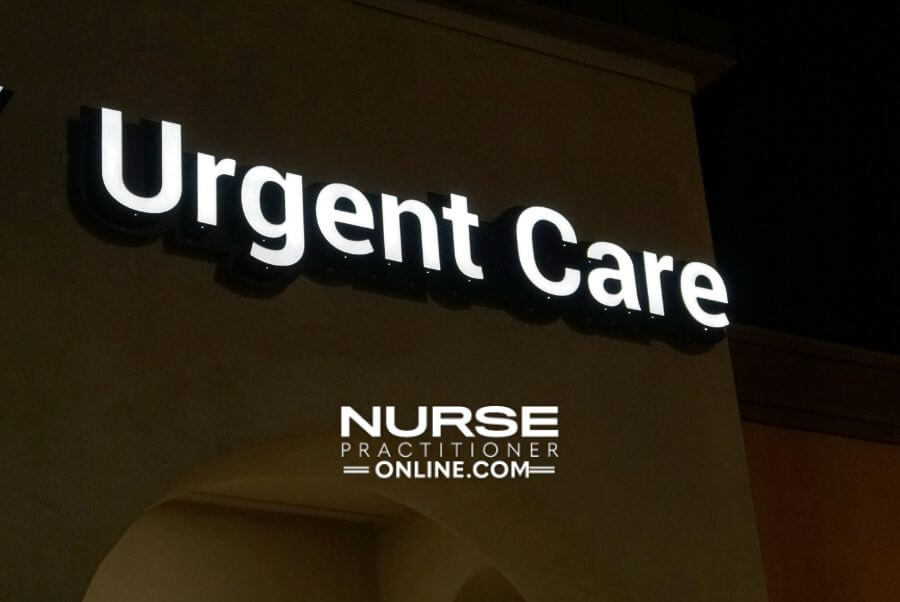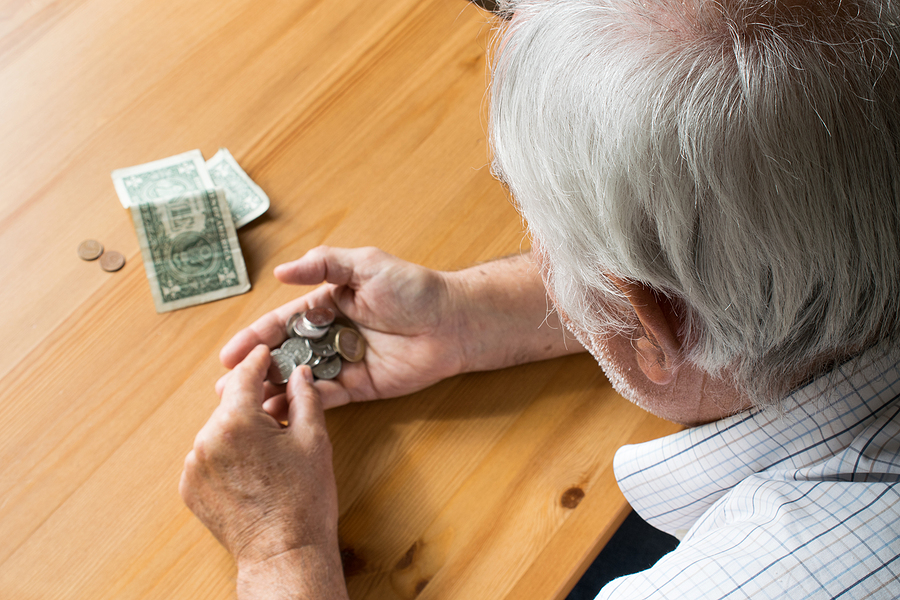The demand for urgent care services is rapidly rising, with visits to urgent care clinics growing by nearly 60% over the last decade, according to the Urgent Care Association (UCA). This surge reflects a broader shift in healthcare: patients want quick, affordable care without the wait times of emergency rooms. In fact, the Centers for Disease Control and Prevention (CDC) notes that nearly 48% of adult emergency department visits are classified as non-urgent, highlighting the increasing reliance on urgent care clinics (CDC).
As a result, urgent care nurse practitioners (UCNPs) are increasingly vital to the healthcare system. These advanced practice nurses bridge critical gaps, offering high-quality, efficient care when patients need it most. According to the U.S. Bureau of Labor Statistics, the employment of nurse practitioners is projected to grow 45% from 2022 to 2032, much faster than the average for all occupations.
For prospective and practicing nurse practitioners, urgent care represents an exciting opportunity to make a direct, meaningful impact on patient outcomes in a fast-paced environment. By understanding the core duties, workflows, skills, and collaboration strategies essential to this role, you can better prepare for a dynamic and fulfilling career.
The Role of an Urgent Care Nurse Practitioner
Urgent care nurse practitioners deliver frontline healthcare services to patients needing immediate, but non-emergent, care. They are trained to assess, diagnose, and treat a wide range of conditions across the lifespan, from minor injuries to acute illnesses.
Let’s dive deeper into the specific responsibilities that define an urgent care NP’s day-to-day practice.
Common Responsibilities
Urgent care NPs are responsible for:
- Conducting comprehensive physical exams and patient assessments
- Ordering, performing, and interpreting diagnostic tests (e.g., X-rays, EKGs, lab work)
- Diagnosing acute illnesses and injuries
- Managing exacerbations of chronic conditions
- Prescribing medications, therapies, and treatment plans
- Suturing lacerations, splinting fractures, and draining abscesses
- Administering injections and immunizations
- Managing wound care, burns, and other minor trauma
- Counseling patients on discharge instructions and follow-up care
- Making referrals to specialists or emergency departments when necessary
These core duties form the backbone of urgent care practice, ensuring that patients receive timely, effective interventions.
Clinical Scope and Workflow
The urgent care environment demands adaptability and efficiency. Nurse practitioners must seamlessly shift from treating minor ailments to managing urgent conditions within a single shift.
A typical day for an urgent care nurse practitioner can include treating:
- Respiratory infections such as bronchitis or pneumonia
- Musculoskeletal injuries like sprains, strains, and minor fractures
- Skin conditions including rashes, cellulitis, and lacerations
- Gastrointestinal complaints such as food poisoning or dehydration
- Acute flare-ups of chronic conditions like asthma or hypertension
According to the National Center for Health Statistics, approximately 13% of Americans visit an urgent care center or retail clinic each year (CDC/NCHS). UCNPs often work with minimal supervision, quickly triaging patients based on severity, managing multiple cases simultaneously, and ensuring that each patient receives timely and appropriate care.
Real-World Examples
Imagine “Jordan,” an urgent care NP in an urban center. During one shift, Jordan stitches a deep cut for a child who fell at the playground, treats an elderly patient with shortness of breath, and prescribes antivirals for a patient diagnosed with the flu—all within a few hours. The ability to manage diverse cases efficiently makes UCNPs indispensable.
Another example is “Taylor,” who practices in a rural urgent care clinic. One evening, Taylor treats a farmer with a compound fracture, a child suffering from a severe allergic reaction, and a teenager with a high fever—making critical decisions independently while stabilizing patients for transfer when needed.
Skills and Qualities Essential for Success
To thrive in the demanding urgent care setting, NPs must cultivate specific skills and qualities that support rapid, effective care.
Thriving in urgent care requires a unique blend of clinical expertise, critical thinking, and interpersonal skills:
- Rapid Clinical Decision-Making: Urgent care settings demand quick, accurate assessments to initiate appropriate treatment plans.
- Multitasking: UCNPs often juggle multiple patients and must prioritize care based on acuity.
- Adaptability: Every shift can bring different challenges, from pediatric patients to occupational injuries.
- Procedural Competency: Skills such as suturing, incision and drainage, and fracture stabilization are critical.
- Communication: UCNPs must explain diagnoses, treatments, and follow-up care clearly to patients from diverse backgrounds.
- Calm Under Pressure: Emergencies can and do arise; maintaining composure is vital for patient safety and team effectiveness.
These competencies not only improve patient outcomes but also contribute to smoother, more cohesive clinical operations.
Collaboration Within the Healthcare Team
Urgent care clinics operate through the concerted efforts of interdisciplinary teams. Nurse practitioners serve as central players in these teams, coordinating and delivering care alongside other healthcare professionals.
Urgent care nurse practitioners are integral members of the healthcare team. They work closely with:
- Medical Assistants and Nurses: For patient triage, obtaining vital signs, and assisting with procedures.
- Physicians: Particularly in cases requiring physician oversight or complex decision-making.
- Radiology Technicians: For prompt imaging diagnostics such as X-rays.
- Administrative Staff: To ensure proper patient documentation, billing, and smooth clinic operations.
Effective collaboration enhances patient outcomes and streamlines care delivery, especially during high-volume shifts.
Procedures Commonly Performed by Urgent Care NPs
In addition to clinical assessments and treatments, urgent care NPs perform a variety of hands-on procedures that directly address patient needs in real time, including:
| Procedure | Purpose |
| Suturing | Repairing lacerations |
| Splinting | Stabilizing fractures or sprains |
| Incision and Drainage (I&D) | Treating abscesses |
| Foreign Body Removal | Extracting objects from ears, skin, or eyes |
| EKG Interpretation | Assessing cardiac function |
| Nebulizer Treatment | Managing respiratory distress |
Mastering these skills allows UCNPs to offer comprehensive care without referring patients elsewhere unnecessarily.
Patient Education and Preventive Care
Beyond treating acute conditions, urgent care nurse practitioners play a crucial role in patient education. They provide:
- Infection Control Advice: Teaching proper handwashing and when to seek further care.
- Injury Prevention Tips: Offering guidance on sports safety and workplace ergonomics.
- Medication Counseling: Educating on appropriate antibiotic use to combat resistance.
- Chronic Disease Management: Advising patients on managing hypertension, diabetes, and asthma during acute flare-ups.
This educational component empowers patients to take an active role in their health, leading to better long-term outcomes.
Prepare for a Successful Nurse Practitioner Career
Urgent care nurse practitioners serve on the frontlines of modern healthcare, providing swift, expert care to patients in need. Their ability to diagnose and manage a wide array of conditions, perform essential procedures, and educate patients is crucial to the success of urgent care centers nationwide. If you are energized by fast-paced environments, diverse clinical challenges, and direct patient interaction, a career as an urgent care NP could be your calling.
Ready to explore further? Learn about nurse practitioner programs that can prepare you for this exciting role and discover licensure pathways to start your urgent care journey today.









